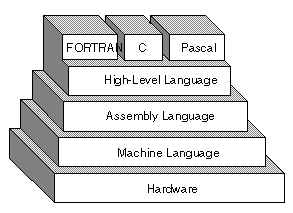Theoretical Paper
- Computer Organization
- Data Structure
- Digital Electronics
- Object Oriented Programming
- Discrete Mathematics
- Graph Theory
- Operating Systems
- Software Engineering
- Computer Graphics
- Database Management System
- Operation Research
- Computer Networking
- Image Processing
- Internet Technologies
- Micro Processor
- E-Commerce & ERP
Practical Paper
Industrial Training
Machine instruction and Assembly Language
Instruction Set
The instruction set, also called instruction set architecture (ISA), is a part of the computer that pertains to programming, which is basically machine language. The instruction set provides commands to the processor, to tell it what it needs to do. The instruction set consists of multiple pieces, including addressing modes, instructions, native data types, registers, memory architecture, interrupt, and exception handling, and external I/O.
An example of an instruction set is the x86 instruction set, which is common to find on computers today. Different computer processors can use almost the same instruction set, while still having very different internal design. Both the Intel Pentium and AMD Athlon processors use nearly the same x86 instruction set. An instruction set can be built into the hardware of the processor, or it can be emulated in software, using an interpreter. The hardware design is more efficient and faster for running programs than the emulated software version.
Examples of instruction set
- ADD - Add two numbers together.
- COMPARE - Compare numbers.
- IN - Input information from a device, e.g. keyboard.
- JUMP - Jump to designated RAM address.
- JUMP IF - Conditional statement that jumps to a designated RAM address.
- LOAD - Load information from RAM to the CPU.
- OUT - Output information to device, e.g. monitor.
- STORE - Store information to RAM.

A programming language that is once removed from a computer's machine language. Machine languages consist entirely of numbers and are almost impossible for humans to read and write. Assembly languages have the same structure and set of commands as machine languages, but they enable a programmer to use namesinstead of numbers.
Each type of CPU has its own machine language and assembly language, so an assembly language program written for one type of CPU won't run on another. In the early days of programming, all programs were written in assembly language. Now, most programs are written in a high-level language such as FORTRAN or C. Programmers still use assembly language when speed is essential or when they need to perform an operation that isn't possible in a high-level language.

